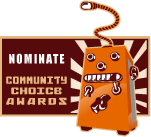The blog Rose Colored Glasses: Thoughts on Instructional Design by JoAnn Gonzalez-Major recently had an article about a presentation she attended on the OpenLabyrinth virtual patient system at Educause 2009. She writes:
Today I attended a presentation on the development of virtual patients learning units with open source tools. The session was lead by Rachel Ellaway, Assistant Dean, Informatics and David Topps, Associate Professor, Clinical Informatics, Northern Ontario School of Medicine. The presenters stepped us through the use of Vue (Visual Understanding Environment) and OpenLabyrinth for the development of highly interactive, low bandwidth problem based learning units. I was amazed at how quickly the units could be developed; the number of decision point could be designed into the scenarios, and the ability to repurpose portions of the units in other activities.Read more at Rose Colored Glasses: http://jmajor.midsolutions.org/?p=583






